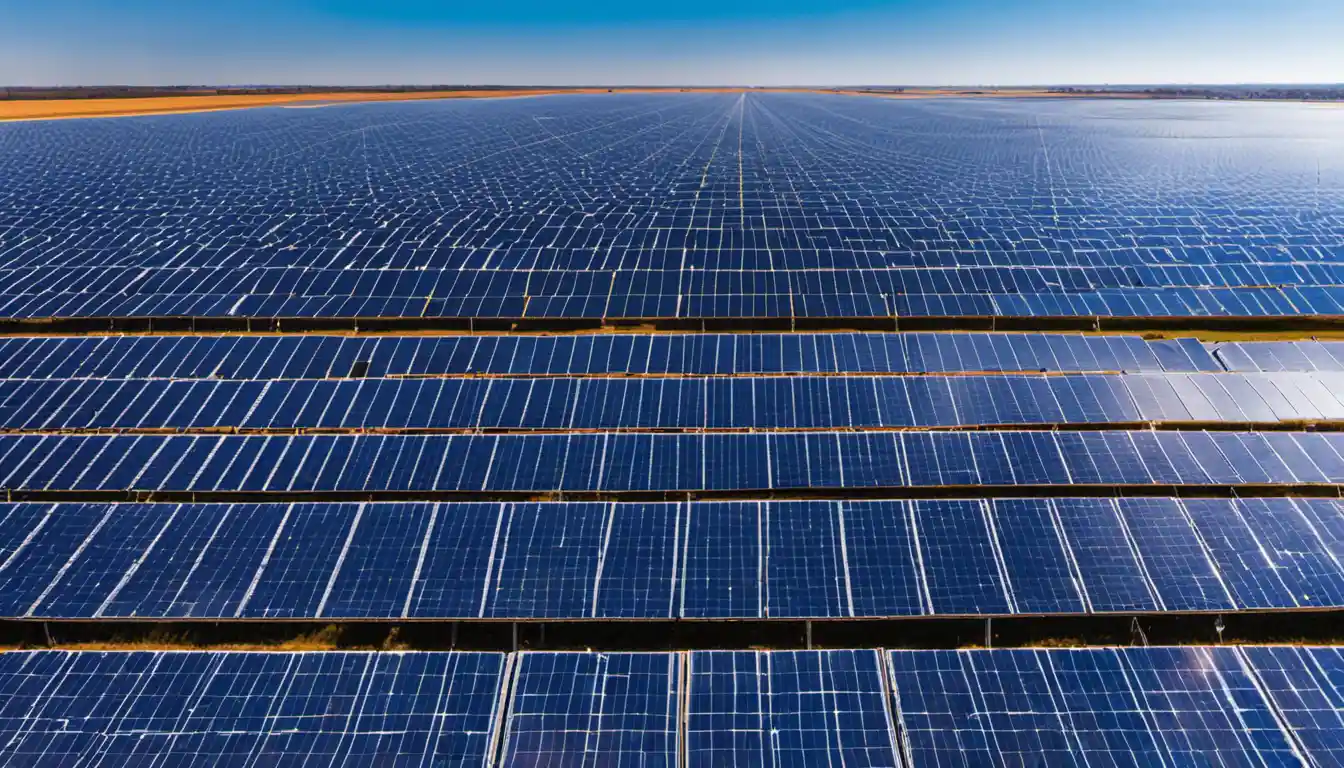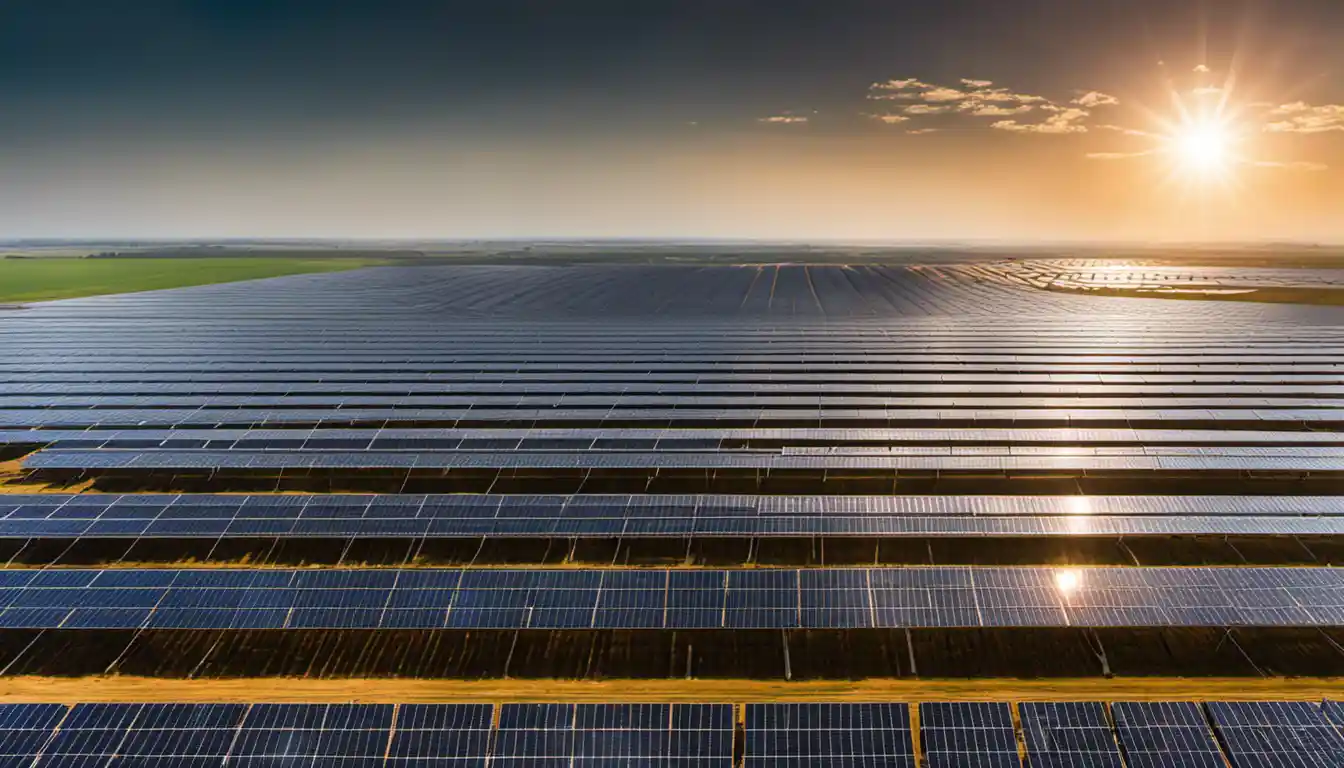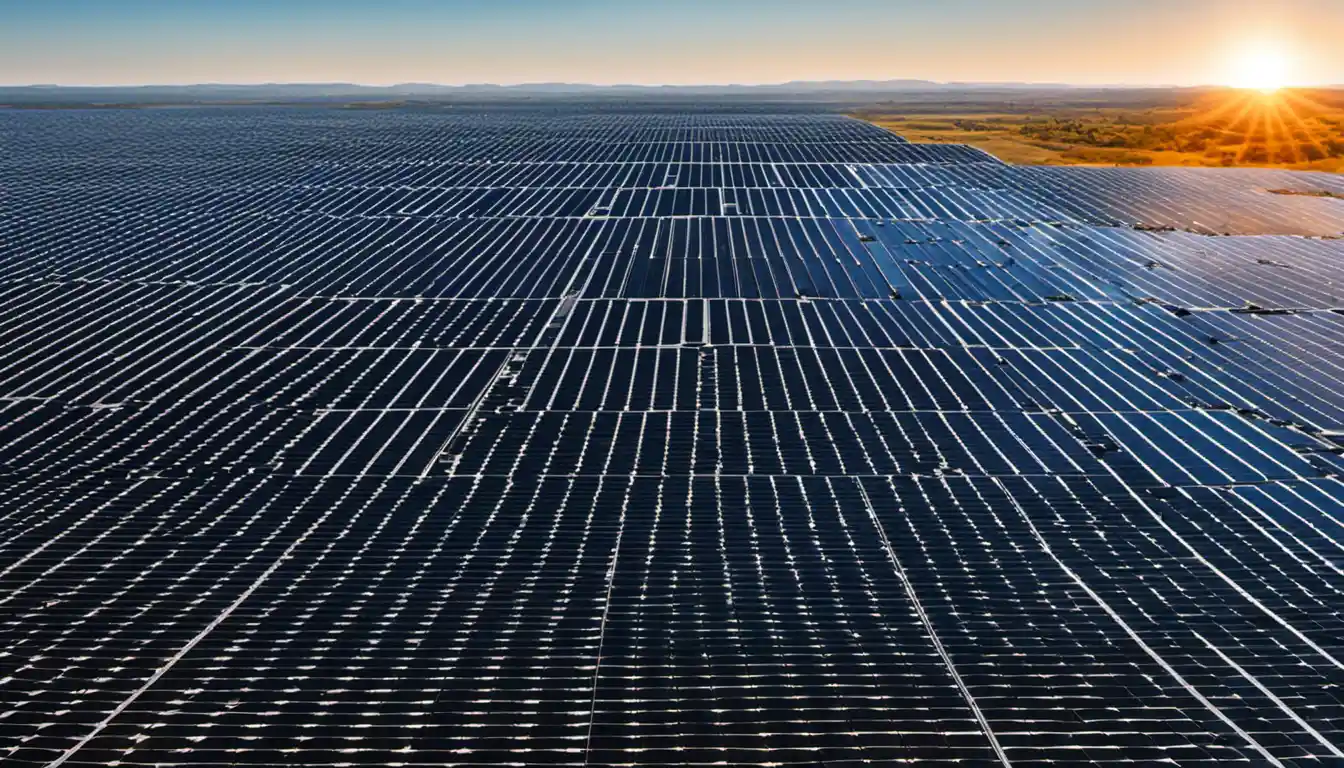What is a Solar Farm?
A solar farm, also known as a photovoltaic power station, is a large-scale photovoltaic system designed for the supply of merchant power into the electricity grid. It is made up of hundreds or thousands of solar panels that absorb sunlight to generate electricity. These farms are typically installed in areas that receive high amounts of sunlight throughout the year.
How Solar Farms Work
The photovoltaic cells in a solar farm’s solar panels work by converting solar radiation into electricity. As sunlight hits the cells, it causes electrons to move, creating an electrical current. This converted current, known as Direct Current (DC), is then converted to Alternating Current (AC) which can be used for electrical power. To learn more about the role of solar panels, take a look at our primer, “What Are Solar Panels?”.
See also: What Are Solar Panels? (How They are Made)
What are Solar Farms Used For?

Solar farms serve many purposes. The primary one is generating renewable energy that contributes to the electrical grid. Using solar power significantly reduces greenhouse gas emissions – primarily CO2, and thus aids in mitigating climate change. There’s also an economic impact: solar farms create jobs for installation and maintenance, and revenue flows from the sale of the generated electricity.
Various Types of Solar Farms
Solar farms can be categorized into two types: utility-scale solar power plants and community solar farms. Utility-scale installations supply power on a large scale to utility companies, who distribute the power to consumers. On the other hand, community solar farms allow consumers to purchase or lease a portion of a solar farm in their community and receive credits on their electricity bills.
What is a Solar Power Plant?
So, what is a solar power plant then, and how does it differ from a solar farm? Well, a solar power plant generates electricity on a large scale, typically for utility companies, similar to the aforementioned utility-scale solar farm. The difference mainly lies in scale. Solar farms often refer to smaller, local installations, whereas solar power plants imply a larger scale that centrally generates power.
What Does a Solar Farm Do?

Now, you might be wondering, “what do solar farms do?” As we’ve discussed, solar farms capture sunlight and convert it into electricity. But it doesn’t stop there. The generated electricity is then transported through a complex network of cables to an inverter, where it’s converted to a usable format. This power is then distributed to our homes, offices, and industrial buildings through the grid, providing a renewable energy source for your electricity needs.
What is a Solar Park?
While terms are sometimes used interchangeably, a solar park often refers to a group of co-located solar power plants or solar farms. These solar parks, sometimes built on unutilized land, form a major part of our renewable energy landscape. They’re a consolidated effort to harness the power of the sun, the greatest natural energy source.
Economic Aspects of Solar Farms

The burning question for many: are solar farms profitable? In short, yes.
Solar farms have immense potential for profitability due to low operating costs after the initial setup and a steady source of revenue from electricity sales or leases. However, the initial investment cost can be high, making financing and investment opportunities in solar farms crucial for their viability.
Potential Drawbacks of Solar Farms
Despite their benefits, it’s worth asking – why are solar farms bad? Solar farms, like any other form of energy production, do carry some environmental impact. Mining for materials to create solar panels can cause habitat destruction. There can also be localized impacts on wildlife, especially if the farm is placed in a natural ecosystem.
Another challenge lies in the energy storage. While steps are being taken to improve efficiency, storing and releasing solar power can still remain a hurdle.
Lastly, some communities express concern over aesthetics or land use. However, it should be noted that these drawbacks often are outweighed by the significant benefits of renewable energy, such as reducing our carbon footprint and reliance on fossil fuels.
Future of Solar Farms
Given the increasing demand for renewable energy, the solar farm industry’s future looks bright. Advancements in technology continue to reduce solar power costs, further encouraging its adoption. With their pivotal role in achieving green energy targets, solar farms have the potential to revolutionize how we power our world.
And that’s a closer look at what a solar farm is. We’ll continue exploring this fascinating and vital part of our energy future in upcoming pieces. Stay tuned to learn more about solar power, and our journey towards a more sustainable world.



